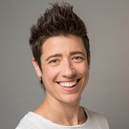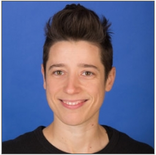
May 19-20; 2018
Chicago, Primal Gym
https://chicagoprimal.com/
Chicago, IL: Saturday May 19, 2018 Chicago Primal Gym opened their doors to host us in their spacious bow truss gym to learn what the famously power-driven, strength-inspired StrongFirst approach to endurance might look like.
Having attended a PlanStrong in 2015, I remember Pavel’s presentation style as precise, dense, and thorough. Surprisingly, I did not need a calculator for a whirlwind weekend of number-crunching and grid-munching. Information-packed, we blazed through what would amount to an AP biology course on Saturday while Sunday was dedicated to seeing nearly every training template from the manual in real time. The value of this cannot be understated. The way something looks on paper compared to a live rendering of a plan must be appreciated and first-hand experience was an option for those who wanted to “feel the pain.” Whereas the PlanStrong ethos encouraged stepping away from frivolous technology and “feelings” and pursuing mathematically precise execution of the plan, Strong Endurance asked us to consider tales of social animals, perceive and rely on certain physiological feelings, and appreciating “what happens under the hood.” Though known for a ruthlessly minimalist approach to training, there was an occasion to demonstrate a new accelerometer apparatus which is available through the StrongFirst store.
Pavel opened Strong Endurance by stating this is for a wide range of people--GPP. The structure of Saturday would explain why to do this type of training at all and why it’s radically different than what is conventionally taught. A tale of two cats led us to consider how we ought to define endurance. While we may have stylistic admiration for the predator who claws and scratches their way to the end of a kill or finish line after much trial, we might define endurance through the lense of strength instead: accessing high power, high strength, high speed and the ability to sustain it. Exemplifying pure power says Pavel, “is not heroic, it’s professional.”
By contrast, what then is weak endurance? We’ve all seen it, the floppy burpee. The sure sign of having been worked to the point that reflexes are dulled and proprioception muted. The cascade of acid buildup, free radicals, and depleted ATP pool in the body--a stress model that is only justifiable when an organism’s life is endangered. With Strong Endurance there is a “blue collar approach to train,” ready and calm. It is composure with the right amount of excitability.
Anyone familiar with the conventional methods for training endurance may have experienced, after many years, muscle wasting and hormonal depletion are the costs one pays. One may have asked if a less costly endurance protocol exists. Strong Endurance [SE] emerged from this very question. After field testing the approach, SE stands as a GPP platform that can be adapted to anyone who cannot afford to be “smoked” by their workouts. Candidates for this style of program are games, combat sport athletes, obstacle racers, TSC participants, fat loss individuals, and those interested in creating more favorable cellular conditions for mitochondrial [metabolic] health.
In quick succession we covered the essentials of energy [the capacity to do work] from the level of electrons to biochemistry: redox, pH [H+], ATP, and creatine [PCr, creatine phosphate]. Then the trophy truth arrives; only with long-term training can we develop the organelle that underpins every adaptation relevant to energy utilization: mitochondria. No short cuts exist to developing them. Short lists do exist, however. This truly is a short list of topics and questions covered Saturday:
What is the role of acid?
How does fasting assist mitochondria?
Under what conditions to we stimulate adaptations in mitochondria?
Is nutrition as important as nutritional timing?
How do muscles contract/relax? Does it take energy [ATP] to relax a muscle?
What are fast fibers?
Which muscle fibers are structurally stronger?
Which fibers require more neural drive?
Which fibers contract first?
How does aging affect fibers?
What are the ways to train fast fibers?
What can the development of slow fibers net us?
Acid’s redeeming qualities
The 4th emergency pathway, myokinase reaction
What are the conditions for sprinting to be a power exercise?
Short rest periods are surprisingly powerful
The mechanisms in place that prevent you from “running yourself dead”
What is acid tolerance?
How short W:R ratios are different than metcons
The difference between training and peaking.
When/how was the anti-glycolytic approach born? [hint: Russia]
What does it do? and what can be done better?
How do we build mitochondria?
Mitochondria quality v. quantity
What are the requirements to disrupt [train] the mitochondria into adaptation?
In typical Pavel fashion, the act of showing up and following along provides a certain training effect. By the end of Day 1, exposure to and organization of the information provided a cerebral lick--a reminder of how one could be training their mind. By the day’s end, one could sense how their cerebral work capacity training fared. The sheer volume and level of nuance of the aggregated information is a distillation of decades of literature and science. This point alone is worth recognizing--Pavel must have a mind of unimaginable rigor and sharpness to collect, let alone to distill and synthesize all this research into a coherent, actionable system. WTH, indeed!
Day 2
On day two we covered nearly all the templates in the almost 200 page manual. Pavel repeated that there are more plans in here than we will ever need. Participants were given an example of each plan to execute in real time while we answered questions about the talk test, tempo, and adapting the plans for sport specificity.
Seeing the plan in action was necessary to understand just how simply these plans can be executed. Moreover, upon completion, each “victim” was asked to say how they felt doing and completing the template example. Overwhelmingly [with the exception of a couple intensive plans] the participants stated each was extremely “doable.” They felt they were practicing right up to the edge of comfort. The simplicity of these plans and their feasibility was compared to how children play and blue collar workers naturally adapt their work and rest periods. It’s a similar cadence experienced best in climbing gyms wherein groups of 3 or 5 individuals stand around and discuss their climber friend’s path as s/he is navigating the wall. After they’ve completed their attempt, another takes their turn. It’s a cadence of I-go-you-go with lots of time to recover, think, and chill. Worth contemplating: it is “training on the edge of pleasure.” Enjoyment eventually yields to indifference which precedes an important threshold with which we should all familiarize ourselves--mild acidosis.
If I could summarize the approach in a few words:
“Stay fresh...mostly"
The technicality of the underlying chemical processes may have interested select groups; I wonder what the medically-minded think? Those who convert coded chemistry language into cell functionality--can they imagine the health consequences that can be taken advantage of through this power approach? I imagine oncology practitioners and biologists, recognizing how this is founded on cellular health, making the connection that these cellular changes can be manifested through strength plans. While it was never overtly stated, there appears to be implications for populations addressing broken metabolism, neurodegenerative diseases, concussion prevention protocols, and autoimmune issues. Strong Endurance might be one of the most important platforms for bringing actionable plans for cellular changes to our collective health...and with health to strength.
Power to us!
Gwen Mihaljevich, a Chicago based practitioner, works primarily in the healing arts and yogic traditions and has since 2003 under the auspice of Ana Forrest. With an academic foundation in music performance and therapy, her interests include deep study of zazen [practicing with the Hollow Bones order], trauma and addiction recovery, behavioral development, neurodegenerative diseases and longevity, strength training [implementing StrongFirst methodology], nutrition, sports psychology, epigenetics, jiu jitsu, and integral leadership.
https://twitter.com/GwenMitchell1

 RSS Feed
RSS Feed
